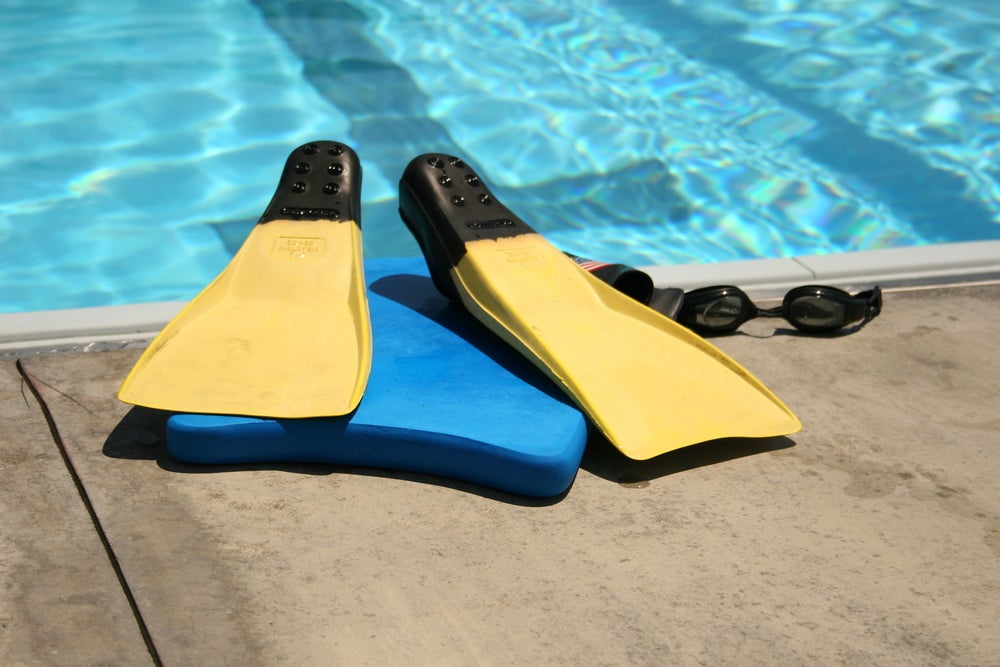How Strong Is Your Swim Kick?

Photo: <a href="http://www.shutterstock.com">www.shutterstock.com</a>
A poor kick in the pool could be attributed to a lack of flexibility in your ankles. Triathletes coming from a running background tend to have long calf muscles and good dorsiflexion (bringing the foot upward toward the shin), while swimmers have short calves and good plantarflexion (pushing foot down like on a gas pedal). These physical differences can cause difficulty when runners try to swim and swimmers start to run.
While swimming, a stiff ankle places the toes perpendicular to the water and acts as a brake. Relaxing the ankle and allowing the toes to point straight back creates a natural flipper out of the foot.
Ankle flexibility is important, but there are other factors that could be holding your kick back. Continuing up the leg, the knees should also be relaxed during the kick motion. As the leg moves down, water pressure will cause the knee to bend slightly. When the leg moves up toward the surface, it will straighten out naturally. Don’t forget: The origin of the kick is from the hips. Strong core muscles are the driving force of all the action!
Swim fins are a useful tool for triathletes with a running background. I recommend full-length, soft-rubber fins that are flexible and can help form a proper kicking motion (such as the Speedo Trialon Rubber Swim Fins, $31.99 at Speedousa.com). If you’re just starting out, be prepared for possible calf, shin and foot cramps in legs that are not accustomed to a plantarflexion position.
Aspiring faster kickers can devote a few minutes each day to active stretching of both the calf and shin muscles. A gentle self-manipulation of the ankle joints will also increase overall range of movement.
RELATED: Refine Your Swim Kick
Kick Set
The sets with fins are alternated with an easy swim to prevent cramping and provide an opportunity to practice good form without an aid.
200 swim warm-up (no fins)
4×50 with fins (25 freestyle kick/25 swim)
100 swim (no fins)
4×50 with fins (25 freestyle kick on your back/25 swim)
100 swim (no fins)
4×50 without fins (25 kick/25 swim)
200 swim cool-down (no fins)
RELATED: Why It’s Important To Conquer The Swim Kick
Follow Triathlete on Twitter @Triathletemag for inspiration, new workout ideas, gear reviews from our editors and more.